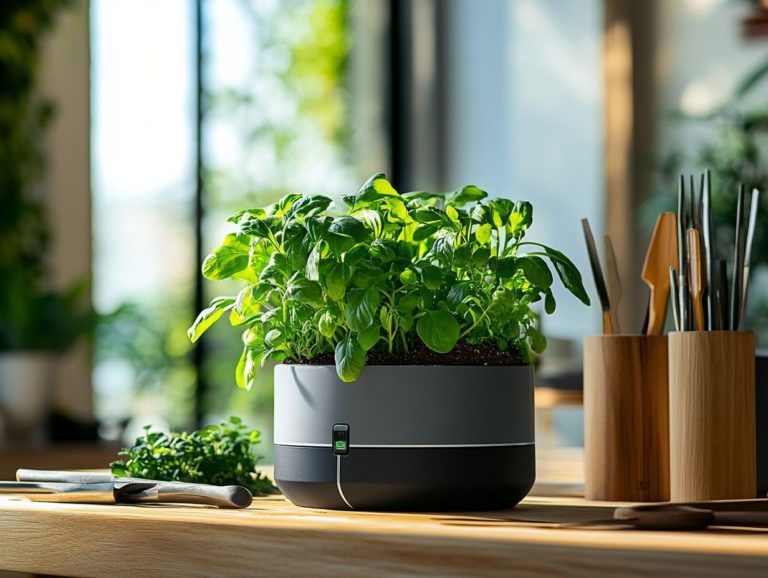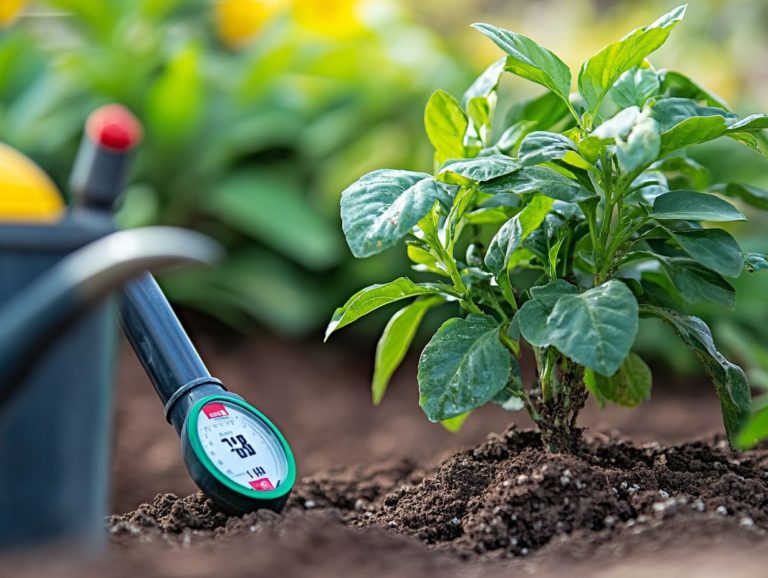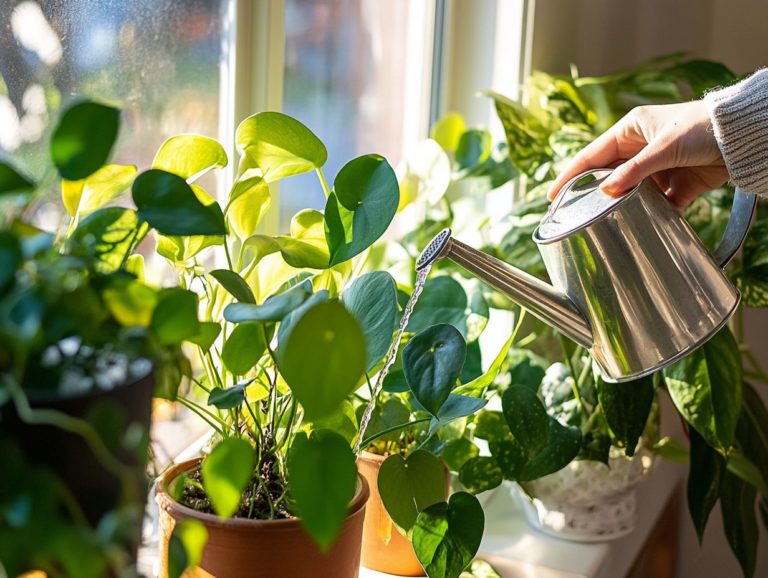How to Check Soil Moisture Accurately
Did you know soil moisture is vital for thriving plants? It affects everything from growth to vitality. Recognizing its significance can be the cornerstone of successful gardening or farming.
This article delves into a range of methods for assessing soil moisture both manual and electronic while considering various factors that influence moisture levels, including climate and soil composition.
You ll gain valuable insights into interpreting soil moisture results and discover practical tips for maintaining optimal moisture levels, ensuring your plants not only survive but truly thrive.
- Key Takeaways:
- Why Soil Moisture is Important
- Methods for Checking Soil Moisture
- Factors Affecting Soil Moisture Levels
- Interpreting Soil Moisture Results
- Tips for Maintaining Proper Soil Moisture
- Frequently Asked Questions
- Why should I care about soil moisture?
- What are the different methods for checking soil moisture?
- How do I use a soil moisture meter to check accurately?
- What is the ideal moisture level for soil?
- Why is it important to check soil moisture at different depths?
- What are the signs of overwatered or underwatered soil?
- Proper soil moisture is crucial for healthy plant growth, as it supports nutrient uptake and photosynthesis.
- There are both manual and electronic methods available for accurately checking soil moisture levels.
- Factors such as climate, weather, soil type, soil characteristics, and composition should be considered when interpreting and maintaining proper soil moisture levels.
Contents
Key Takeaways:
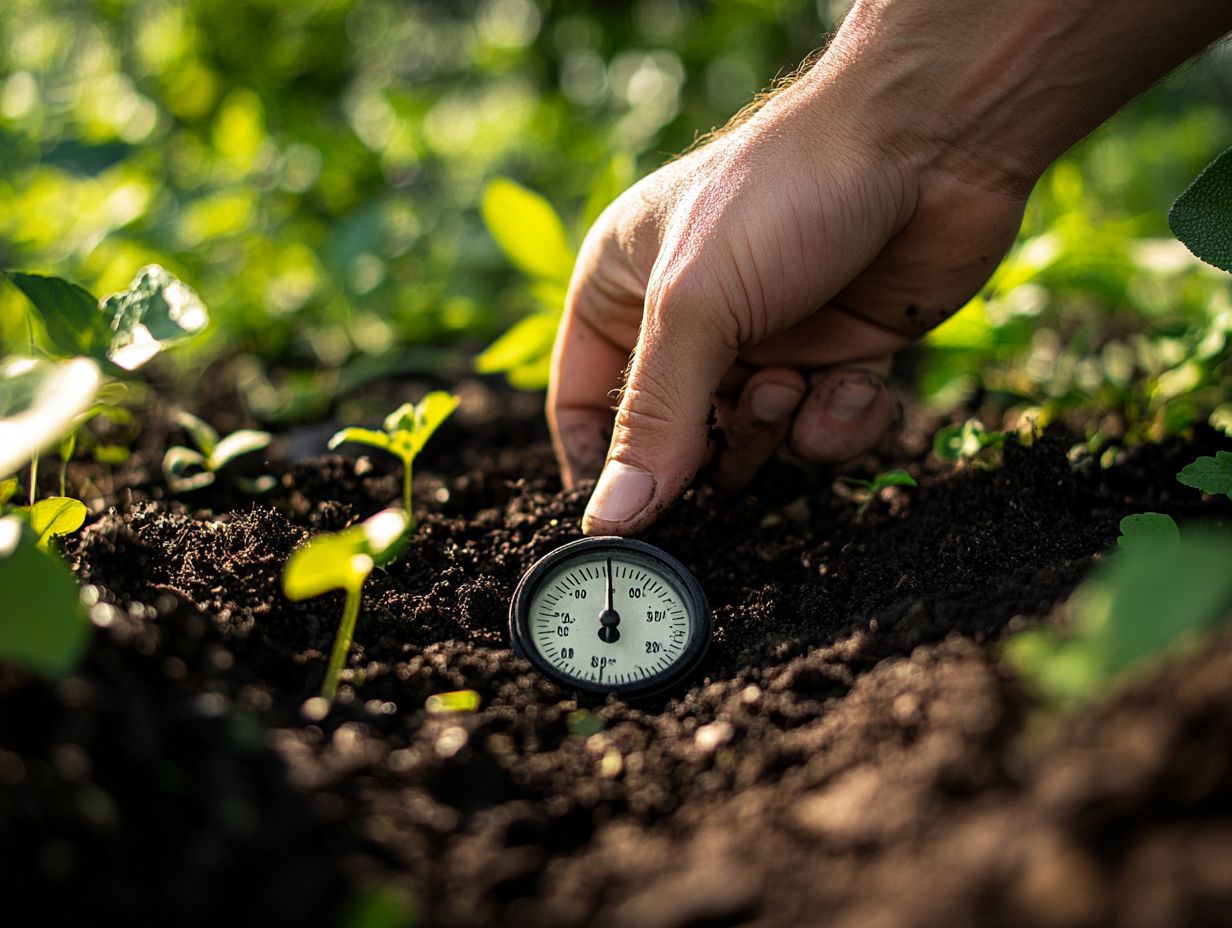
Why Soil Moisture is Important
Soil moisture stands as a cornerstone of agricultural production, acting as the lifeblood for plants and profoundly influencing their growth, health, and overall crop yields. When moisture levels are adequate, the essential characteristics of the soil such as texture and organic matter are preserved, promoting optimal conditions for crop development.
Understanding soil moisture levels is crucial for effective irrigation management and ensuring a consistent water supply, especially in areas dealing with water stress brought on by shifting weather patterns.
The Role of Soil Moisture in Plant Growth
Soil moisture is absolutely essential for plant growth, providing the vital water and nutrients necessary for development and overall health.
When moisture levels are just right, plants effectively absorb nutrients, resulting in robust growth and lush foliage. On the flip side, when moisture is lacking, plants can experience water stress, struggling to access essential minerals and hindering their development.
For example, drought conditions can lead to wilting and nutrient deficiencies, while overly saturated soil can smother roots and create an inhospitable environment for beneficial microorganisms.
Achieving a balance in soil moisture is crucial; by maintaining optimal levels, you ensure that plants receive enough hydration for nutrient uptake. This not only fosters a healthier ecosystem but also enhances productivity.
Methods for Checking Soil Moisture
Accurate soil moisture measurement is crucial for effective irrigation management. You have various methods at your disposal, both manual and electronic, to assess the moisture content in the soil.
Choosing the right approach can significantly enhance your irrigation strategies, ensuring optimal water usage and healthier crops.
Manual Methods
Manual methods for checking soil moisture, such as soil sampling and gravimetric measurement, offer you essential insights into moisture content and retention capabilities.
These techniques empower both researchers and farmers to deepen their understanding of soil’s physical properties and behavior. The process starts with meticulous soil sampling, where you’ll select specific locations to ensure a representative analysis. You ll collect samples from various depths and areas, capturing the variability in soil composition.
Once you’ve gathered the samples, they undergo gravimetric measurement, a method that involves weighing the soil to determine moisture content. Here, you record their weight before and after drying, revealing the exact moisture content by calculating the difference. This step is crucial for assessing water availability and retention in the soil. To learn more about ensuring your plants get the right amount of water, check out our guide on how to test soil moisture before watering. Such knowledge is invaluable for enhancing agricultural practices and promoting sustainable land management.
Electronic Methods

Measuring soil moisture electronically using tools like moisture sensors, tensiometers, and satellite technology gives you precise insights into soil water availability.
These tools provide crucial data that empower you to make smart irrigation choices. Moisture sensors use methods that measure how much water is in the soil, while tensiometers show how the soil pulls on water, giving a clear view of moisture levels. To learn more about effectively utilizing these devices, check out how to use moisture meters for plants.
Satellite technology adds a broader perspective, allowing you to gather large-scale moisture data. With these cutting-edge electronic methods, you can enhance crop health and improve water conservation and agricultural productivity.
Factors Affecting Soil Moisture Levels
Soil moisture levels are influenced by various factors, including climate, weather conditions, and the specific soil types in your area. These elements are essential in determining water supply and availability.
Climate and Weather Conditions
Climate and weather conditions greatly impact soil moisture levels and water supply in agriculture.
Understanding how temperature changes can cause rapid evaporation is crucial. Varying rainfall patterns also affect groundwater replenishment, creating challenges in irrigation management.
As droughts persist, it s vital to adopt strategies that use efficient irrigation techniques. Implementing smart irrigation systems and conservation practices helps you tackle these challenges effectively.
Soil Type and Composition
The soil s type and composition significantly affect its moisture retention. Different textures determine how much water plants can store and use.
Sandy soils drain quickly due to their large particles and big pore spaces, leaving little moisture. On the other hand, clay soils hold water well but can become compacted, which may block root growth.
Loamy soils, a mix of sand, silt, and clay, provide the best conditions for both water retention and drainage.
Organic matter is crucial for improving soil structure and boosting moisture retention. Understanding these characteristics is key for effective land management and sustainable agriculture.
Interpreting Soil Moisture Results
Interpreting soil moisture results helps you grasp the optimal moisture levels needed for different plants. This knowledge is especially important for understanding field capacity and the permanent wilting point.
Mastering this information ensures your plants thrive in their environment.
Optimal Moisture Levels for Different Plants

Plants need different moisture levels to grow well. This affects their health and crop yields.
Crops like corn and rice flourish in consistently saturated conditions, while others, such as wheat and barley, thrive in drier soils.
These specific moisture requirements are essential not just for seed germination but also for nutrient uptake. Inadequate or excessive water can stress the plants, ultimately leading to decreased yields.
Conducting thorough moisture analysis allows you to adopt a tailored approach to watering. This maximizes plant health and productivity while minimizing wastage and reducing environmental impact through informed farming practices. You can also learn how to create a soil moisture meter to enhance your understanding of soil conditions.
Tips for Maintaining Proper Soil Moisture
Maintaining the right level of soil moisture is crucial for fostering healthy plant growth. You can achieve this balance through a variety of effective tips and techniques, including proper watering methods and the strategic use of mulch.
Watering Techniques and Frequency
Using the right watering techniques is essential. It ensures your plants have enough water.
Among the various methods available, drip irrigation truly shines for its efficiency, delivering water directly to the plant’s root zone while minimizing evaporation. This is especially beneficial in arid regions and for improving irrigation efficiency.
In contrast, traditional watering methods like sprinklers or hand watering might require a bit more finesse to prevent over-saturation or under-watering. To optimize your irrigation strategy, it’s essential to regularly assess soil moisture levels.
Tools such as moisture sensors or even a simple finger test can empower you to determine the most effective watering frequency.
By mastering these techniques, you can significantly enhance your irrigation management. Ensure that every droplet counts toward nurturing your plants sustainably.
Using Mulch to Retain Moisture
Mulch is your best friend for keeping soil moist. This strategy reduces water stress and promotes robust plant growth.
By applying various types of mulch, you can significantly enhance moisture retention in your soil, which is vital for maintaining plant health during dry spells.
Organic options, such as shredded bark or straw, break down over time, enriching the soil with nutrients and improving its structure. On the other hand, inorganic mulches, like gravel or landscape fabric, create a durable barrier that effectively minimizes evaporation.
Both types of mulch work together to control weeds and maintain a consistent soil temperature, further supporting optimal moisture levels.
Apply mulch today to conserve water and create a thriving garden!
Frequently Asked Questions
Why should I care about soil moisture?
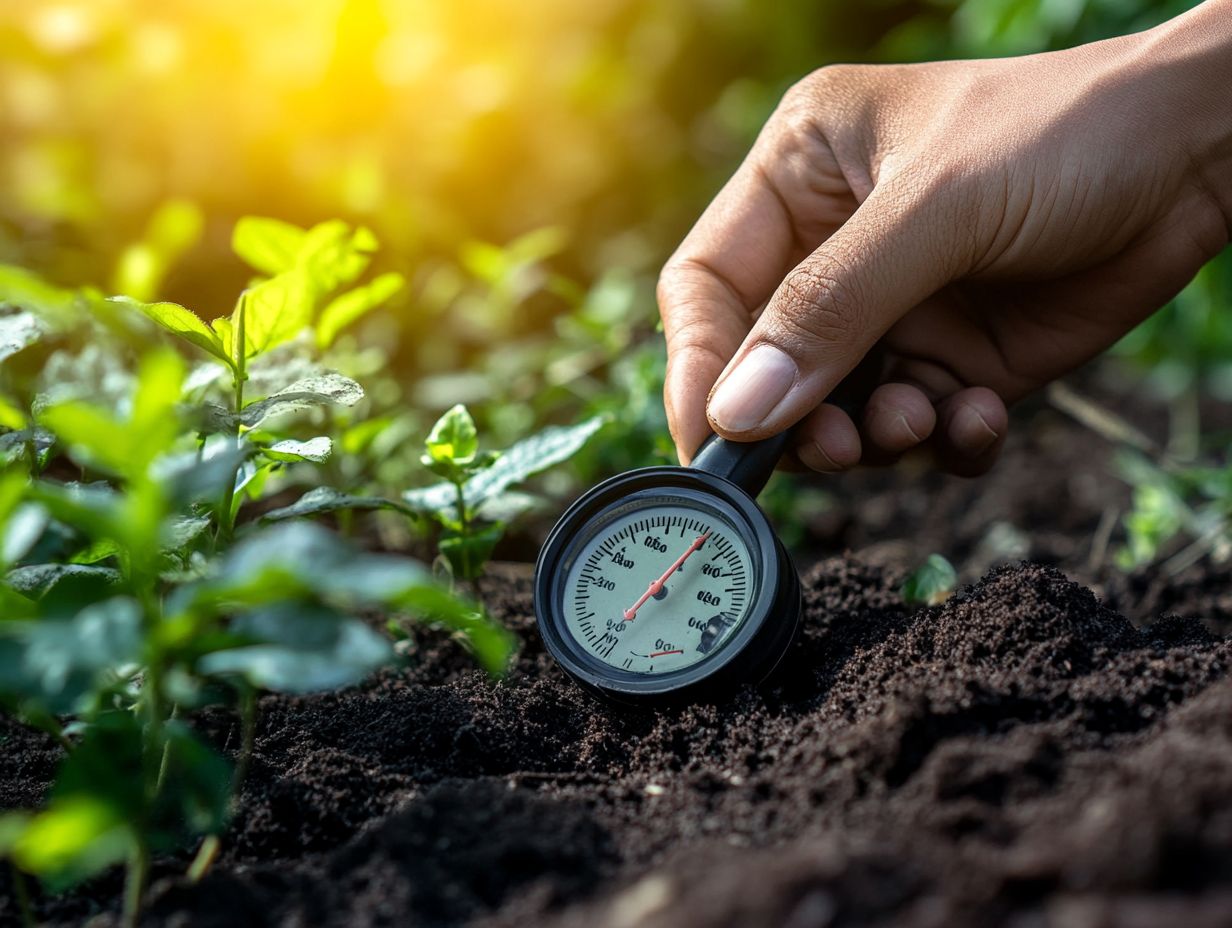
Soil moisture refers to the amount of water present in the soil. It’s important to check accurately as it affects plant growth, health, water usage, and soil erosion.
What are the different methods for checking soil moisture?
The most common methods include:
- Using a soil moisture meter
- A tensiometer
- A gypsum block
- Simply using your hands to feel the soil for moisture
How do I use a soil moisture meter to check accurately?
Insert the probe of the meter into the soil and wait for the reading to stabilize. Make sure to take readings at different areas in the garden for a more accurate overall measurement.
Monitor your soil moisture levels regularly to ensure the health of your plants!
What is the ideal moisture level for soil?
The ideal moisture level varies by plant type. Most plants prefer soil that is moist but not soggy, ideally between 50-75% of the soil’s capacity.
Why is it important to check soil moisture at different depths?
Plants have different root systems, and checking moisture at various depths provides a clearer picture of the soil’s condition. This is crucial for plants with deep roots.
What are the signs of overwatered or underwatered soil?
Overwatered soil might smell bad and look soggy. In contrast, underwatered soil is dry and crumbly. Both conditions can cause plants to wilt and stunt growth, so remember to check soil moisture regularly!

